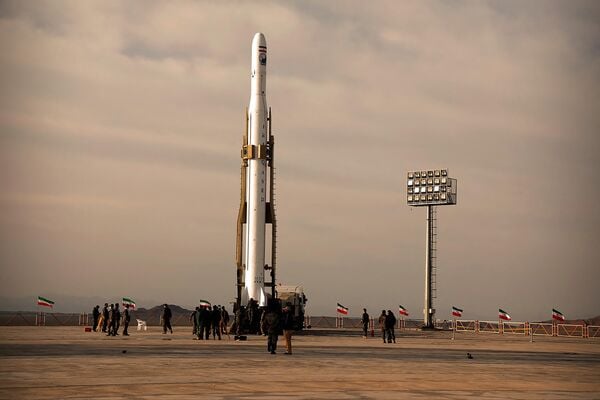
The construction phase for Iran's inaugural dual-use satellite constellation will begin later this year. Pictured is the IRGC's Qased (Ghased) satellite launch vehicle, which launched its Noor-1 satellite at the Shahrud facility on 22 April 2020. (Sepah News)
The construction phase for Iran's inaugural telecommunications constellation will begin later this year, Hossein Salariyeh, head of the Iranian Space Agency, announced in early July.
Known as the ‘General Soleimani Satellite System' after the Islamic Revolution Guard Corps (IRGC)-Quds Force commander, the constellation is intended as a dual-use narrowband telecommunication system for government users and the private sector.
Due to launch into low Earth orbit (LEO) in the next year or so, the constellation is being developed by a consortium of private and public firms, although details regarding exactly who are not public.
In a previous discussion in October 2023 Salariyeh outlined that the constellation would initially provide narrowband internet of things (IoT) services, meaning it will mostly collect data from sensors on the ground and transmit it to a reference station. The number of satellites will increase in the years to follow, he added.
The ‘General Soleimani Satellite System' is part of Iran's ongoing 10-year space programme, implemented in January 2023, which aims to turn the country into a regional space power. Roscosmos, Russia's state-owned space corporation, is supporting Iran, offering assistance with infrastructure, launchers, remote sensing, telecommunications, and navigation.
Along with this constellation, Iran's IRGC successfully launched its Noor-3 military Earth observation satellite onboard its Qased launch vehicle on 27 September 2023, after Noor-2 in March 2022 and Noor-1 in April 2020, although the latter fell back to Earth in April 2022.
Two remote sensing satellites, Pars-2 and Pars-3, are also under development, which will be used by the military.
Looking to read the full article?
Gain unlimited access to Janes news and more...







